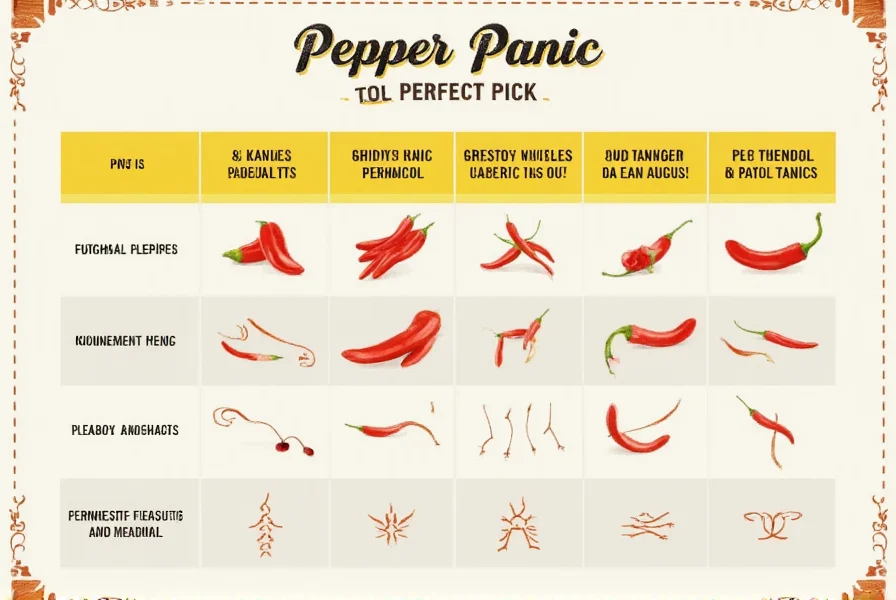Chile Poblanos: From Mild to Magical — A Spicy Love Affair You Can't Miss!
Table of Contents
- What Are Chile Poblanos?
- Heat Level and Flavor Profile
- Top 5 Ways to Use Chile Poblanos in the Kitchen
- Buying Guide: Choosing the Best Chile Poblanos
- Fresh vs. Dried: What’s the Difference?
- Recipes That Shine with Chile Poblanos
- Growing Your Own Chile Poblanos at Home
- Final Thoughts on Chile Poblanos
What Are Chile Poblanos?
Let’s start with the basics: Chile poblanos are large, dark green peppers native to Mexico, named after the state of Puebla. If you’ve ever ordered stuffed peppers or mole sauce in a Mexican restaurant, there's a good chance you've already had one.
They’re known for their deep flavor, moderate heat, and versatility in both fresh and dried forms. In fact, when they're dried, they become called 'ancho' peppers — but more on that later.
Heat Level and Flavor Profile
Now, let's talk spice. How hot are chile poblanos? They're not your average jalapeño by any stretch, but they won’t burn your mouth off either.
| Pepper Type | Scoville Heat Units (SHU) | Flavor Notes |
|---|---|---|
| Chile Poblano (Fresh) | 1,000 – 2,000 SHU | Earthy, smoky, slightly sweet |
| Jalapeño | 2,500 – 8,000 SHU | Fruity, crisp, grassy |
| Hatch Green Chile | Varies widely (1,000–10,000 SHU) | Bitter-sweet, roasted, vegetal |
| Ancho (Dried Poblano) | 1,000 – 2,000 SHU | Smoky, raisin-like, rich |
If you're looking for something with depth and complexity rather than searing heat, poblanos are your best friend. Their earthy flavor adds richness without overwhelming the palate — perfect for dishes where balance is key.
Top 5 Ways to Use Chile Poblanos in the Kitchen
- Stuffed Peppers: Remove the seeds and membrane, stuff them with meat, cheese, or rice, then bake until tender.
- Rajas: Thinly slice roasted poblanos and cook with onions and cream — serve over tortillas or with eggs.
- Mole Sauce: Blend dried anchos (the matured form of poblanos) into traditional mole sauces for a smoky backbone.
- Chili Rellenos: Coat poblano peppers in batter and fry, often stuffed with cheese, for this classic dish.
- Sauces & Salsas: Roast and puree poblanos to make creamy or chunky salsas that pair well with tacos, enchiladas, or nachos.
Buying Guide: Choosing the Best Chile Poblanos
Whether you're shopping at a farmers market or your local grocery store, knowing how to pick the right chile poblano can elevate your meal from bland to brilliant.
What to Look For
- Appearance: Bright green, firm, glossy skin without soft spots or wrinkles.
- Size: Medium to large; avoid overly small peppers which may lack flavor.
- Texture: Firm but not rock hard — they should give just a little when pressed gently.
Product Spotlight: Top Picks for Buying Poblano Peppers
Fresh Chile Poblanos (Organic)
- Features: Locally grown, pesticide-free, hand-harvested.
- Advantages: Ideal for roasting, stuffing, or slicing raw into salads.
- Use Cases: Perfect for chili rellenos, mole, or rajas.
- Target Audience: Home cooks, food enthusiasts, and beginner chefs.
- Best For: Those who enjoy hands-on prep and experimenting with fresh flavors.

Dried Ancho Peppers
- Features: Sun-dried, natural preservation, no additives.
- Advantages: Long shelf life, rich flavor, versatile in soups, stews, and sauces.
- Use Cases: Used in mole, chili sauces, and braised dishes.
- Target Audience: Cooks seeking bold, slow-cooked flavors and those new to dried peppers.
- Best For: Making homemade sauces or blending into marinades and rubs.
Fresh vs. Dried: What’s the Difference?
You might be wondering whether to go fresh or dried when it comes to chile poblanos. Here's a quick breakdown:
| Characteristic | Fresh Poblano | Dried Ancho |
|---|---|---|
| Flavor | Grassy, bright, slightly bitter | Deep, smoky, fruity |
| Usage | Stuffing, roasting, salsas | Sauces, moles, soups |
| Preparation | Roasted and peeled | Soaked in hot water, then blended |
| Shelf Life | 3–5 days refrigerated | Up to 6 months stored dry |
Recipes That Shine with Chile Poblanos
Ready to put those peppers to work? Here are three crowd-pleasing recipes that showcase the versatility of chile poblanos:
- Cheesy Chile Relleno Casserole: Layer roasted poblanos, melted Oaxaca cheese, and a light egg batter before baking until golden brown.
- Crema de Poblano Soup: Blend roasted poblanos with garlic, onion, chicken broth, and cream for a silky, comforting soup.
- Mole Poblano: Simmer dried anchos with tomatoes, spices, chocolate, and almonds to create the famous mole sauce — traditionally served over turkey.
Growing Your Own Chile Poblanos at Home
Want to take your love affair with poblanos to the next level? Try growing them in your own garden!
- Climate: Warm, sunny areas with at least 6 hours of sunlight per day.
- Soil: Well-draining soil with plenty of organic matter.
- Watering: Regular watering, especially during flowering and fruiting stages.
- Harvest: Pick when fully mature — they’ll turn from green to red if left on the plant longer (which increases heat and sweetness).
Final Thoughts on Chile Poblanos
From mild-mannered to deeply flavorful, chile poblanos are the unsung heroes of the spice world. Whether you roast them, stuff them, or blend them into a complex sauce, these peppers bring a richness that few others can match.
Remember: they’re not all about the heat — it’s the flavor that truly sets them apart. So next time you see a stack of glossy green poblanos at the market, grab a few and get creative. Who knows? You might just fall in love with them too.










 浙公网安备
33010002000092号
浙公网安备
33010002000092号 浙B2-20120091-4
浙B2-20120091-4